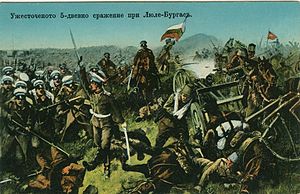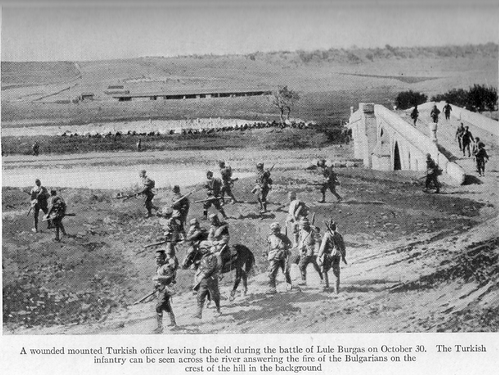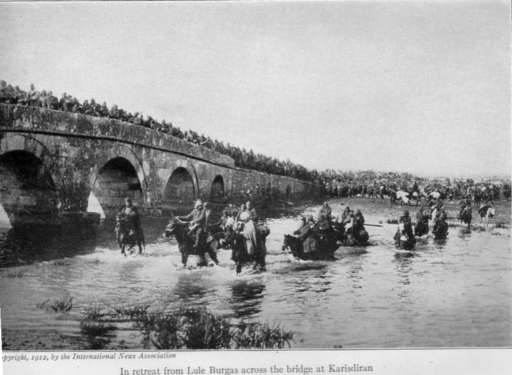Battle_of_Lule_Burgas
Battle of Lule Burgas
1912 battle of the First Balkan War
The Battle of Lule Burgas (Turkish: Lüleburgaz Muharebesi) or Battle of Luleburgas – Bunarhisar (Bulgarian: Битка при Люлебургас – Бунархисар, Turkish: Lüleburgaz – Pınarhisar Muharebesi) took place between the Kingdom of Bulgaria and the Ottoman Empire and was the bloodiest battle of the First Balkan War. The battle took place from 28 October to 2 November 1912. The outnumbered Bulgarian forces made the Ottomans retreat to Çatalca line, 30 km from the Ottoman capital Constantinople. In terms of forces engaged it was the largest battle fought in Europe between the end of the Franco-Prussian War and the beginning of the First World War.[8]


